Due to their versatility, durability, and cost efficiency, High-Density Polyethylene (HDPE) plastic pipes have become a consensus in many industries. This all-encompassing guide will discuss the particularities and advantages associated with HDPE pipes, including chemical, corrosion, impact resistance, flexibility, and low weight. Further, we will examine what kinds of industries do and where HDPE pipes are best suited, such as water systems, sewage systems, industrial pipes, irrigation, etc. Apprehending these aspects will give the readers an understanding of why HDPE pipes are widely accepted in today’s infrastructure and how they assist in making the construction industry and the environment environment-friendly.
What is an HDPE Pipe?
hdpe plastic pipe
High-density polyethylene (HDPE) pipe can be defined as a kind of piping that is a thermoplastic made of very stiff and robust polymers. It is developed by polymerizing ethylene, thus creating a lightweight, durable, and elastic material. Such pipes exhibit remarkable resistance against various physical and chemical elements and are used for water and gas distribution, sewage, agricultural irrigation, etc. Than metal or concrete pipes, these HDPE pipes can be dependable and eco-friendly in many industrial and infrastructural works because of their joint-free nature and resistance to very high pressure as well as harsh environmental conditions.
Overview of HDPE
High-density polyethylene (HDPE) is a type of thermoplastic easily recognized owing to its exceptional properties, like its high strength-to-density ratio, making it one of the most valuable materials. The best-known internet resources about HDPE claim that this polymer has several unique features – high tensile strength, good impact resistance, and effective chemical resistance compared to other materials. Typically, the density of HDPE pipes is within the range of 0:93 – 0.97 g/cm³, which helps lower their weight. Their tensile strength is generally about 31.7 MPa, while they can operate at temperatures between -50°C and 80°C without altering their structure even when environmental factors change. These parameters justify HDPE’s selection for applications where the material needs to remain strong but also flexible and ecological.
Manufacturing Process of HDPE Pipe
The manufacturing of HDPE pipes involves a process that includes several significant steps related to their quality and endurance. First, high-density polyethylene pellets are introduced into an extruder, which has been warmed and the feedstock melted. The resultant HDPE is then passed through a pipe die in a continuous pipe configuration. Next is the cooling process, in which the pipe is passed through several water tanks to solidify its shape. The cooled pipe is cut into defined lengths, and various tests are conducted to verify that it complies with industry standards.
Technical Parameters:
- Melt Flow Index (MFI): This is a critical parameter for processing HDPE; usually in the range of 0.2 to 0.5 g/10 min, it influences the extrusion speed and the temperature settings.
- Tensile Strength: This is the internal pressure of the pipe, which is usually in the range of 20 to 37 MPa.
- Pressure Rating (PN): The classification of the Manner in which various pressures are maintained by the pipe. For most HDPE pipes, the graded pressure rating is around PN10 to PN16.
- Diameter and Wall Thickness: These parameters are particularly important for defining the strength of the pipe and its intended use; dimensions are usually, but not limited to, standard ISO 4427 or ASTM D3035.
The procedure aims to produce HDPE pipes that are anticorrosive, abrasion-resistant, and stress-cracking-resistant, fortifying their place as ideal piping materials for modern architectural piping systems.
Comparison with Other Pipe Materials
After comparing HDPE pipes with other types of pipes, such as PVC, metal, or concrete, several significant differences can be observed:
- Durability and Life Span – HDPE piping systems are solid and efficient and, in most instances, do not cause any degradation over (many) decades. Unlike metal piping systems that suffer rust and corrosion, HDPE piping systems are unaffected by chemical and environmental changes due to their resistant characteristics.
- Flexibility and Installation—Unlike concrete or metal pipes, HDPE pipes can bend quite a lot during and after installation. This property makes them resistant to ground movement, making them useful in places prone to earthquakes or places that frequently have pipes that turn or bend. On the other hand, please keep in mind that materials such as PVC are a little bit more elastic but do not go the extra mile when it comes to withstanding extreme stresses.
- Cost and Efficiency—HDPE pipes may be more expensive than PVC right at the beginning, but they have a low lifetime cost because maintenance needs are reduced, and their lifespan is longer. Furthermore, there are fewer costs for transporting HDPE, and the reason is self-evident—pipes for water and sewerage are made of heavy metal and concrete materials.
- Technical Parameters:
- Tensile Strength: The HDPE tensile strength is rated from 20 to 37 MPa, better than the PVC of 34.5 to 41 MPa and on par with some lower grades of metal pipes under certain conditions.
- Temperature Resistance: The operational temperature range for HDPE is between -40°C and 60°C, while that for PVC is restrained to a range of 0°C to 60°C. The range for metallic pipe is wide but sometimes needs to be insulated or protected from rust.
It is noteworthy from this comparison that there are many industries and structures in which HDPE is likely to have advantages, making its increased use more desirable for environmentally friendly and effective pipe systems.
What are the Applications of HDPE Pipe?
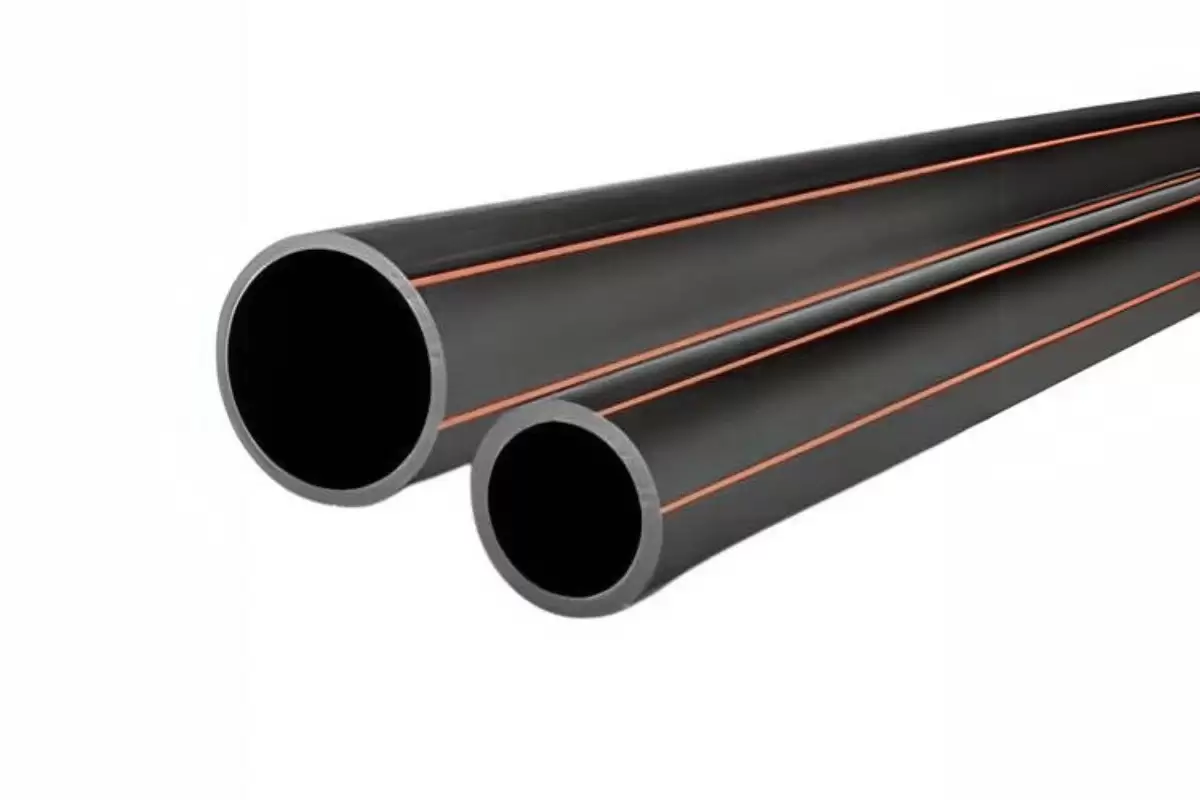
HDPE pipes have been adopted in different industries due to their strength and effectiveness. In water supply and distribution systems, PDPE pipes are preferred because they do not leak or corrode; thus, the water supply is secured by pressure. HDPE pipes are also used in wastewater and sewage systems since they are easily deformed and resistant to toxic substances, allowing for dirty water transport without damage. Furthermore, in industrial use, pipes made of HDPE materials have been used because of their strength and resistance to pressure and temperature extremes. They are mainly used for transporting chemicals and other dangerous goods. Finally, in farming, HDPE pipes provide an effective method of irrigation by the installation of cost-effective systems that require less time to set up and operate.
Potable Water Systems
Potable water systems worldwide have gained recognition for their reliability and the use of HDPE pipes. Their non-corrosive nature helps to a great extent in flash, minimizing the chances of impurities infiltrating the water, which is of utmost importance. The properties associated with HDPE enable installation under challenging locations with minimal chances of service interruption. Also, to prevent unnecessary constriction in HDPE pipes, the internal structure of the pipe enhances smooth water flow, thereby lowering pumping energy usage.
Technical Parameters:
- Corrosion Resistance: This is an important feature in the spatial distribution of clean water HDPE pipes, given that it does not have the limitations of metal pipes that have rust.
- Durability: HDPE pipes, depending on the manner of installation and environmental conditions, have a service life of fifty to one hundred years.
- Flexibility: This inherent property of HDPE ensures fewer fittings are required and, thereby, fewer leak points.
- Hydraulic Efficiency—The smooth inner surface of pipes allows for a greater rate of volume flow and minimizes friction losses at a lower cost.
It is then how these properties built up HDPE pipes have been the right choice for potable water systems, now fulfilling the latest trends of distribution networks for safe and effective water supply systems.
Gas Distribution
High-density polyethylene (HDPE) pipes have a significant hold in the gas distribution industry because of their excellent performance. Mobility…is one of the essential characteristics of HDPE pipes as it enables them to cope with the movement of soil, thus lowering the chances of failure, which is very important in guaranteeing the safety of underground gas pipes. HDPE has the typical advantage of not being susceptible to rust. This is beneficial because it does not need repairs or replacements. After all, there will be no leaks from rust or other chemicals.
Technical Parameters:
- Flexibility and Resilience: This bending quality, without breaking, enables HDPE pipes to take up shocks from earth movements and break none.
- Corrosion Resistance: This is because the construction material is made so that it cannot participate in any reactions; hence, the gas is safe from leaks.
- Fusion Joints: Heat fusion joints of HDPE thermoplastic pipes and fittings result in leak-proof connections, thereby improving the safety of the gas distribution system.
- Low Temperature Performance: It is Highly Impact resistant at a range of various temperatures, reducing the chances of brittleness or cracks at low temperatures.
All these aspects provide confidence that HDPE pipes represent safe, efficient, and long-lasting gas distribution systems, meeting relevant industry standards and tackling such assumptions concerning environment and safety in gas piping systems.
Sewer and Drainage Systems
High-density polyethylene (HDPE) pipes are suitable for sewerage and drainage systems because of their strength and resistance to wear and chemicals. The material features a smooth inner surface, hence the increased efficiency of the water flow since there is no chance of blockage. In addition, HDPE pipes are not susceptible to biological growth, which means they will function properly for years without being damaged by the environment. Such properties of HDPE adjacent sewerage and drainage systems mean lower construction and running costs as well as prolonged service life of the systems.
Technical Parameters:
- Abrasion Resistance: This feature helps to sustain a degree of exposure that is uncontrollable due to wear and tear caused by flowing fine solid or waste materials.
- Chemical Resistance: This prevents pipes from corrosion and other destruction caused by bad elements found in wastewater.
- Smooth Interior Surface: This helps maintain higher flow rates by limiting friction, which lowers the chances of clogging and backup situations.
- Biological Resistance: Prevention of the infiltration of roots and fungi, which destroys the integrity of the piping system.
With these technical attributes, HDPE pipes are confirmed to be one of the strong sewerage and drainage pipes in use today, which meets today’s required operating conditions and allows for designing sustainable infrastructure.
What are the Benefits of Using HDPE Pipe?
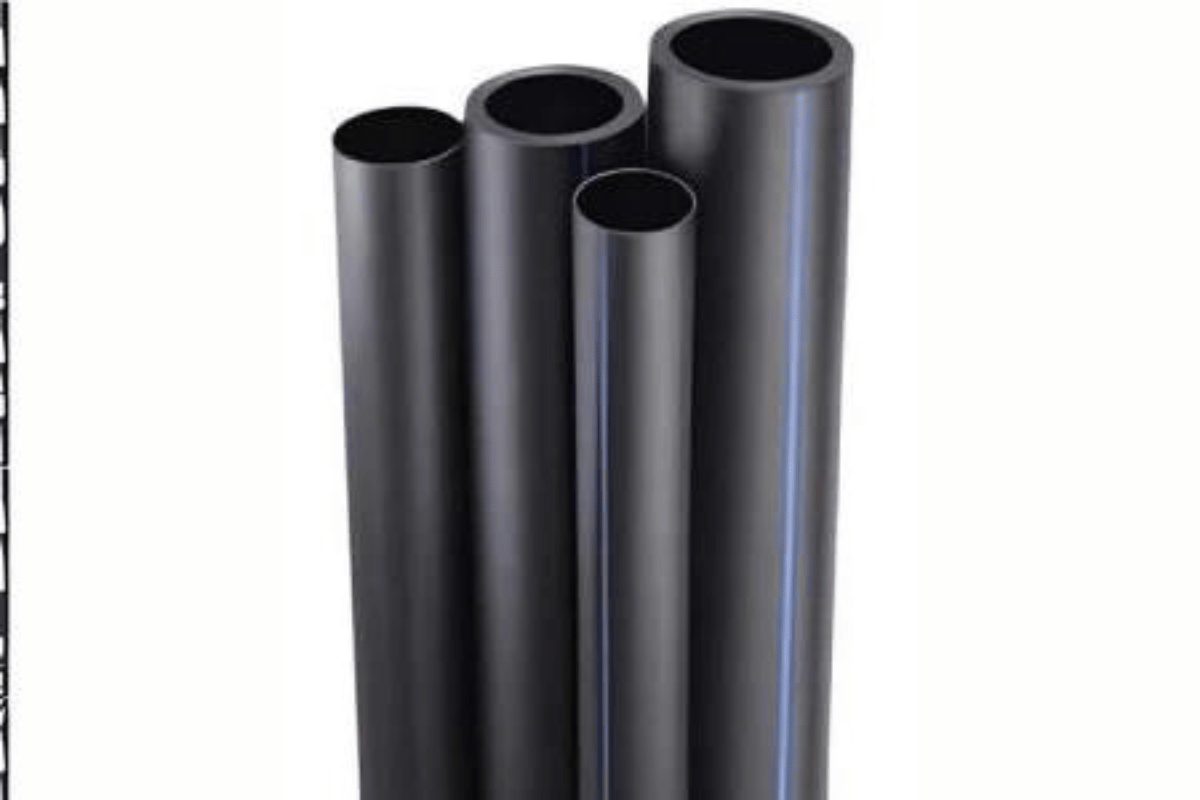
HDPE pipes are beneficial and widely used in different sectors for good reasons. To begin with, they are strong against corrosion, rust, and chemicals, ensuring durability in harsh environments. Next, HDPE pipes are easy to install because of their flexibility, thus reducing the cost of labor and equipment. Their lightweight also aids in economic transport and handling. It is also noted that these pipes offer excellent hydraulic performance due to the reduction of the drag factor when liquid flows inside the pipe due to the inner surface’s smoothness. These pipes are also better for the planet as they are 100 % recyclable, and the impact during the manufacture and installation of the pipes is relatively low. All in all, HDPE pipes offer efficient, affordable, and environmentally responsible solutions regarding piping systems.
Durability and Flexibility
HDPE pipes have outstanding properties, including high durability and the ability to stretch as required by different applications. HDPE pipes are highly stress-resistant and will not succumb to environmental factors like extreme temperatures and high pressure. The pipes possess high tensile strength, which lies within the range of 21-37 MPa, and an elongation at break, which is more than 800 percent; therefore, those structures can stretch but will not break. It further enhances usability in maneuvering and fitting pipes around piping obstructions with few joints in complicated installations. This degree of flexibility helps eliminate the many joints, thus shortening the installation time and the number of failures in the piping system. All in all, these parameters ensure that HDPE pipes perform under adverse conditions and remain functional for a long time.
Leak-Free Joints
The HDPE pipes have leak-free joints, mainly because of several welding methods adopted. Fundamentally, butt and electrofusion are the methods used in installation and are the reasons for the high joint strength. As highlighted by industry leaders, these methods ensure that pipe ends are heated to a specific temperature, provided by Kenneth Warren, Chief Engineer, USW. This eliminates most potential weaknesses that arise with traditional joint mechanisms, which is why it is utilized in critical areas such as fluid transport. The results showed that butt fusion jointing is achieved at welding temperatures of about 200-220 degrees Celsius and above, whereas implant fusion is achieved at temperatures between 180-210 degrees Celsius. These methods improve pipes’ service time and help prevent pollution; therefore, HDPE pipes are used for both fresh water and sewage.
Resistance to Corrosion and Chemicals
HDPE pipes have developed a good reputation due to their excellent resistance to chemicals and corrosives in industrial environments or the surroundings. This resistance is mainly because of polyethylene, a chemical barrier against acids, bases, and even organic solvents. As per various experts from within the industry:
- Low-density polyethylene( LDP): HDPE’s composition makes it non-reactive to chemicals, preventing its degradation with time. This property extends the life of the pipe and minimizes the chances of any form of leakage or failure.
- Use of Polyethylene Piping in Acid and Alkaline Environments: HDPE pipes are structurally sound under extreme pH conditions and in acidic and alkali environments, making them appropriate for wastewater treatment and chemical processing facilities.
- Resistance to Internal Corrosion: corrosion-resistant HDPE pipes do not rust and, unlike metal pipes, do not have problems with corrosion. This particular aspect is essential in regions facing the difficulties of saline or lousy water conditions since its performance will last several years without a special coating or treatment.
These technical parameters undoubtedly prove that HDPE pipes can be used even in situations where their exposure level to chemicals is considerably high, thus making them an ideal alternative for durable and reliable piped system applications.
How to Install HDPE Pipe?
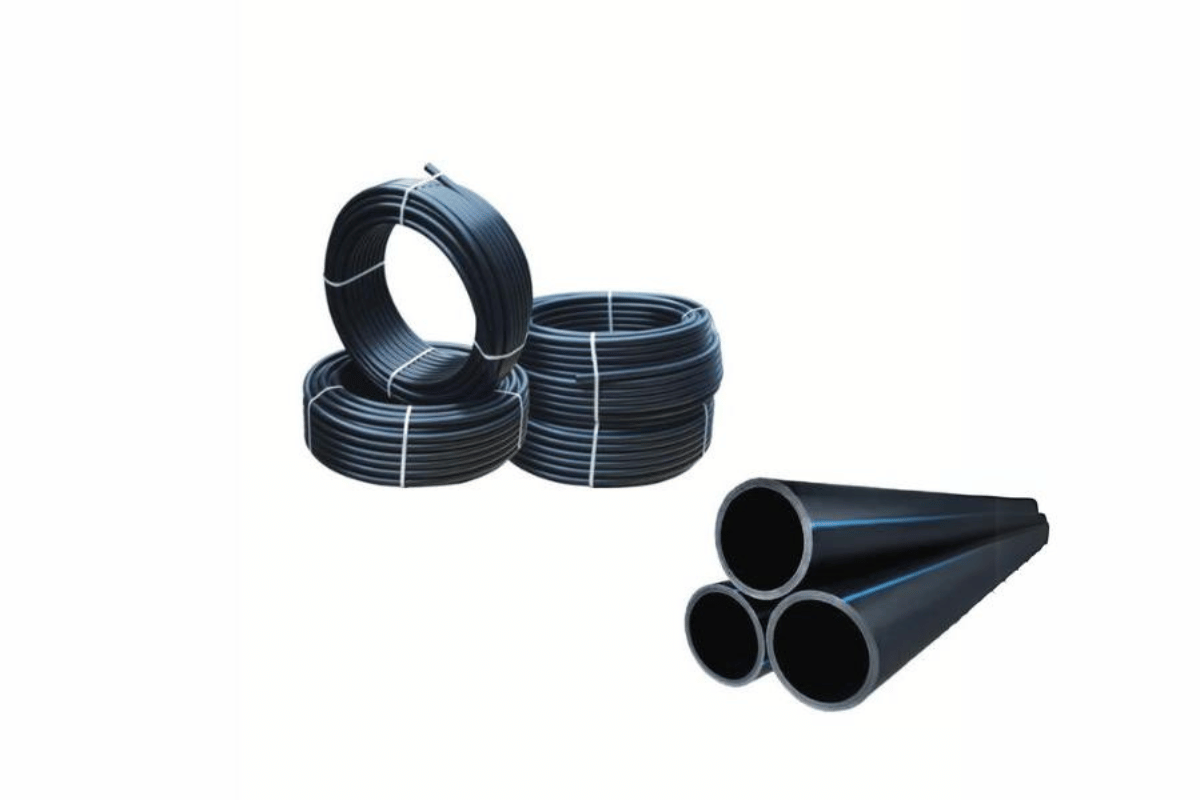
There are a few basic procedures that have to be performed sequentially to install the HDPE pipe. Firstly, trench preparation and dams, which are the ultimate cradles for pipes, should be emphasized. For orienting the HDPE pipes into the trench, it is vital to check for cracks in the pipes. For pipe joints, use welding, which is butt fusion; this technique involves melting the pipe ends and joining the two sections by pushing the melted angles together. After completing every pipe section, gently place the pipes into their trench without twisting them or causing unnecessary strain. Replace the excavated earth and thoroughly compact it in to support the pipe. Ultimately, the procedure thoroughly tests the entire system to verify the quality of welds and if there are any leaks. Following these steps will help achieve a durable and efficient HDPE piping system.
HDPE Pipe Installation Methods
Depending on the circumstances, several methodologies are widely used when installing HDPE pipes. From the most visited online sources, we can introduce the top techniques as follows:
- Trenching method: This is a traditional technique where excavation is employed to retrieve the pipes. The trench must be of sufficient depth to ensure that the pipes are not exposed to the elements. Particulars that must not be ignored are pipe trench depth, soil stability conditions, and suitable backfill to hold the pipe.
- Horizontal directional drilling (Hdd) is another trenchless method with less soil disturbance. It works well for pipes that need to be located below roads, rivers, or buildings that would otherwise be disturbed. It requires specific instruments and specialists. Basic factors include the pipe’s level of flexibility, the existing soil conditions, and the geographical area to be drilled to ensure proper installation.
- Pipe bursting: This technique is used for old or damaged pipes that need to be renovated. A bursting head is pulled through the old pipe, and instead of leaving the cavity empty, a new HDPE pipe is inserted in place simultaneously. Significant areas are the outer diameter of the existing pipe, the condition of the material, and the tensile strength of the new pipe achieved.
Every method has its strengths, and it usually depends on the site conditions, project requirements, and environmental aspects that some methods are necessary over others. With knowledge of these methods and the associated technical parameters, proper HDPE pipe installations are possible.
Fusion Techniques for HDPE Pipe
Fusing techniques are significant in installing a flawless and leak-free HDPE pipe. The commonly used procedures include:
- Butt Fusion: It involves heating the ends of the pipes to be joined together and then pressing them together to form a permanent joint. It works well with long pipes of the same diameter. The critical aspects are temperature, heating time speed, and alignment to achieve a strong connection.
- Electrofusion is the best way to connect pipes of different diameters or where space is tight. It refers to the joining of pipes using a special fitting that incorporates electric coils for heating. Parameters such as voltage, heating time, and cooling period influence the degree of joint effectiveness.
- Socket Fusion: It is pretty similar to butt fusion but is applied for smaller diameter pipes where the outer surface of the pipe and the inner surface of a fitting pipe are heated up to their softening point and pressed together. Typical parameters of importance relate to even heating, constant insertion force, and accurate alignment.
When deciding on the appropriate fusion method, pipe size, area of installation, and project particularities need to be considered. Effectively controlling the technical parameters will enhance the intended purpose of the pipe installation.
Common Challenges in HDPE Pipe Installation
Using HDPE pipelines in construction is associated with specific difficulties that may cause delays and reduce the project’s productivity. Some of the significant challenges include:
- Site Conditions and Accessibility: Certain features of the works site, such as rocks and small working spaces, can obstruct the actual positioning and joining of the pipes. These limitations can be prevented by doing the necessary pre-installation site works and choosing the proper jointing technique.
- Temperature: HDPE pipes, like other plastic transporting materials, may be affected by temperature regimes that influence the shape and connections of the twined parts. Thus, while carrying out the process, the recommended temperature limits must be maintained, considering that the pipes are brought together within the tools in a reclined manner.
- Representative Handling and Orientation: The orientation of the pipes fused at the joints needs to be the same. A lack of such parameters will lead to fusion misalignment, compromising the strength of the joint and increasing the chances of leakage. Accurate joint formation will eliminate other problems arising due to the initiation of tension and wrong twisting of sections of the pipes.
Technical parameters, such as normal heating and various cooling times for fusion, are among the provided steps essential in attaining these challenges. Nonetheless, compliance with the instructions from the manufacturers and the requirements set forth improves the likelihood of successful installation processes of the HDPE pipes.
Those who wish to gain a deeper understanding of technical details are suggested to check engineering documents and manufacturer suggestions.
What are the Specifications and Standards for HDPE Pipe?
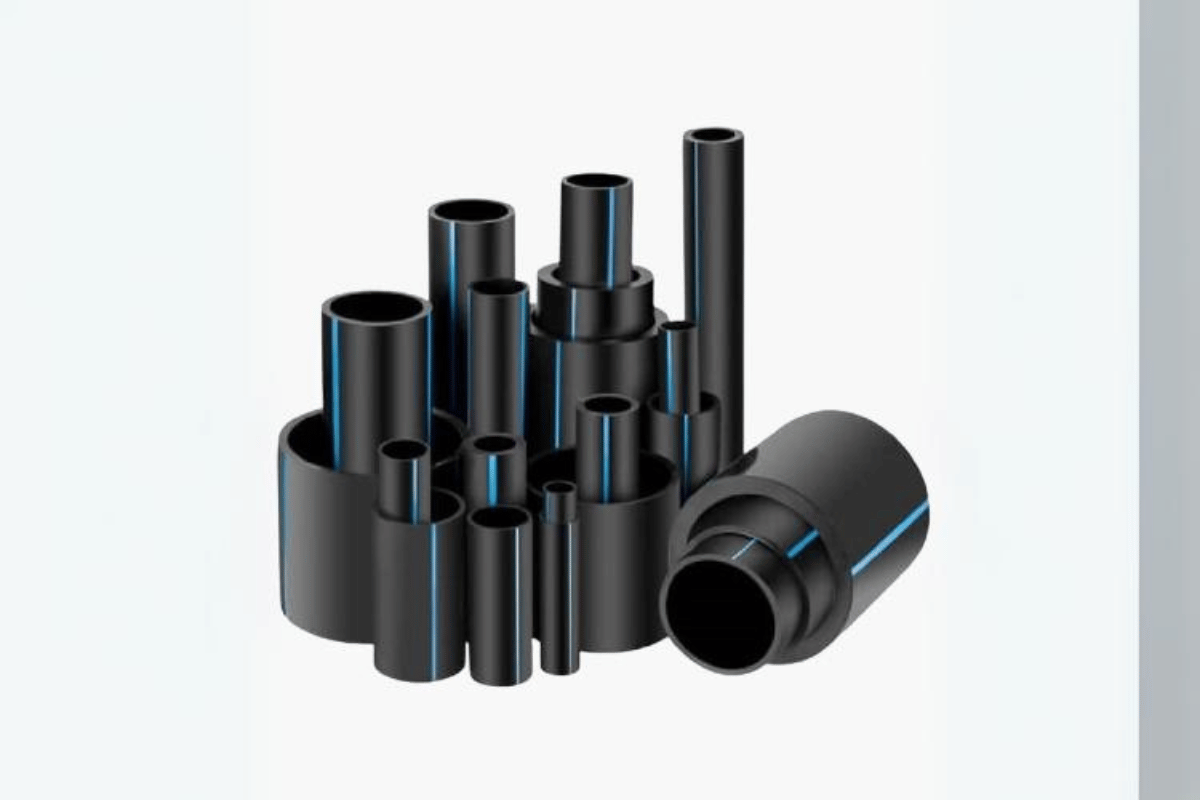
As to the details and requirements concerning HDPE pipe and its application, it may be easier to help relate this to the commonly found practices from the websites of several players in the industry. It can be derived from these sources that HDPE pipes are produced according to the internal standards of AP, E and E B where AP is the standard for the smaller dimension F714 for the larger one type of pipes. Polyethylene piping systems are manufactured as per the internal requirements of ISO 4427, including AWWA C901 and C906, which are specifications for water pipes and their applications, including safe potable water in various forms. Some important ones are oh those and several other dimensional margins like diameter, wall thickness, pressure rating, and type of material PE4710 or PE3408. Also, any HDPE pipe has to meet basic tests of tensile strength, low-temperature impact test and environmental stress crack resistance test before being regarded useful for its intended operation in any form of use.
Understanding ASTM D3350 and PE4710
ASTM D3350 is a standard specification that determines the properties of polyethylene plastics, including, but not limited to, those used for pipes. D3350 outlines classifications based on density, melt index, flexural modulus, tensile strength, and other essential material characteristics. These parameters ensure the material’s usability in different climatic conditions.
The PE4710 grade refers to a high-density polyethylene material classified under ASTM D3350 and meets the performance requirements of those standards. This grade has better resistance to pressures, better temperature service, and protection against chemical and environmental stress cracks. Some main technical characteristics of PE4710 are:
- Density: ascribed to ASTM D3350 for some specific performance characters.
- Melt Index: influences the processing of the grade, a measure of their melt flow behavior.
- Flexural Modulus: quantifies the flexibility of a material in regards to its deflection under stress.
- Hydrostatic Design Basis (HDB): PE4710 has a HDB already assigned, thus the material can sustain pressure for a long duration.
- Environmental Stress Crack Resistance (ESCR): concerns the ability of a material to resist cracking when it is subjected to stress and other factors.
Manufacturers who follow the ASTM D3350 specifications can guarantee that the PE4710 pipes comply with the required service conditions for structures such as drinking water distribution pipelines, industrial conveying lines, and the like.
Pressure Ratings and Pipe Size
Individual components, including pressure ratings and pipe size, are important while laying out or utilizing PE4710 pipes. Pressure rating reveals the maximum internal pressure of a polyethylene pipe, which affects the chances of rupture under certain conditions, such as temperature and pipe diameter.
- Standard dimension ratio (SDR): This is a critical parameter for evaluating other characterizations, such as when estimating pressure ratings. SDR refers to the wall-to-diameter ratio. Slimmer pipes, of which the lower SDRs have thick pipe walls, tend to withstand higher pressures.
- Pressure Class (PC): The PC of a pipe is directly proportional to the SDR and explains the serviceability of the pipe or the service pressure that the pipe can withstand. For PE4710 pipes, the last standard applicable pressure for the application states that the SDRs commonly applied range from SDR 11 to SDR 21, which have pressure classes suitable for several applications.
- Temperature Compensation: Due to the heritable pressure rating due to the physical characteristics of polyethylene as influenced by temperature, more than one rating standard may have to be developed. Polyethylene pipe class PE4710 is rated has a baseline rated at temperature 73F across a thermal range 23C where such temperature is from am elevating one, however, heat or temperature above this threshold is required for restricted usage should be seek for when complete safety and durability is being aimed at.
- Nominal pipe size (NPS) is the method of specifying pipe size when it is dependent only on pipe diameter. When both pipes are exposed to similarly high internal pressures, larger pipes often have a higher SDR rating than smaller pipes.
Familiarity with these technical specifications allows for their proper application and PE4710 pipes’ extended service in various environments, including municipal water supply and industrial piping works. By employing a reasonable combination of SDR, pressure class, and pipe size, engineers’ designs would not only meet the project but also the safety requirements.
Quality and Compliance by WL Plastics
As safety and quality are paramount, WL Plastics complies with industry standards and other best practices, allowing stakeholders to have confidence in the polyethylene piping solutions they choose. This is a summary based on the three most relevant articles on the internet:
- Material Quality: WL Plastics ensures that all the ‘PE4710’ Pipes are within ASTM and AWWA. The mechanical and structural standards concerning these materials are safety and reliability standards that are relevant, especially in the use of these materials in the water distribution and gas system.
- Manufacturing Precision: Manufacturing activities at WL Plastics are adequately controlled to prevent working and functional dimensions and wall thickness from diverging. This precision aids in attaining the right Standard Dimension Ratio (SDR), which in turn helps perfect the pressure class for each application.
- Compliance and Certifications: All WL Plastics products undergo thorough testing and context certification from the appropriate organizations so that all pipes meet the relevant safety and environmental constraints. In addition, certifications such as ISO, NSF, and PPI strengthen the level of confidence in pipeline performance and sustainability.
Whether by adherence to these requirements or providing a clear view of the production process, WL Plastics invests itself into excellent quality and compliance and earns the trust of those who come to them for piping solutions.
Frequently Asked Questions (FAQs)
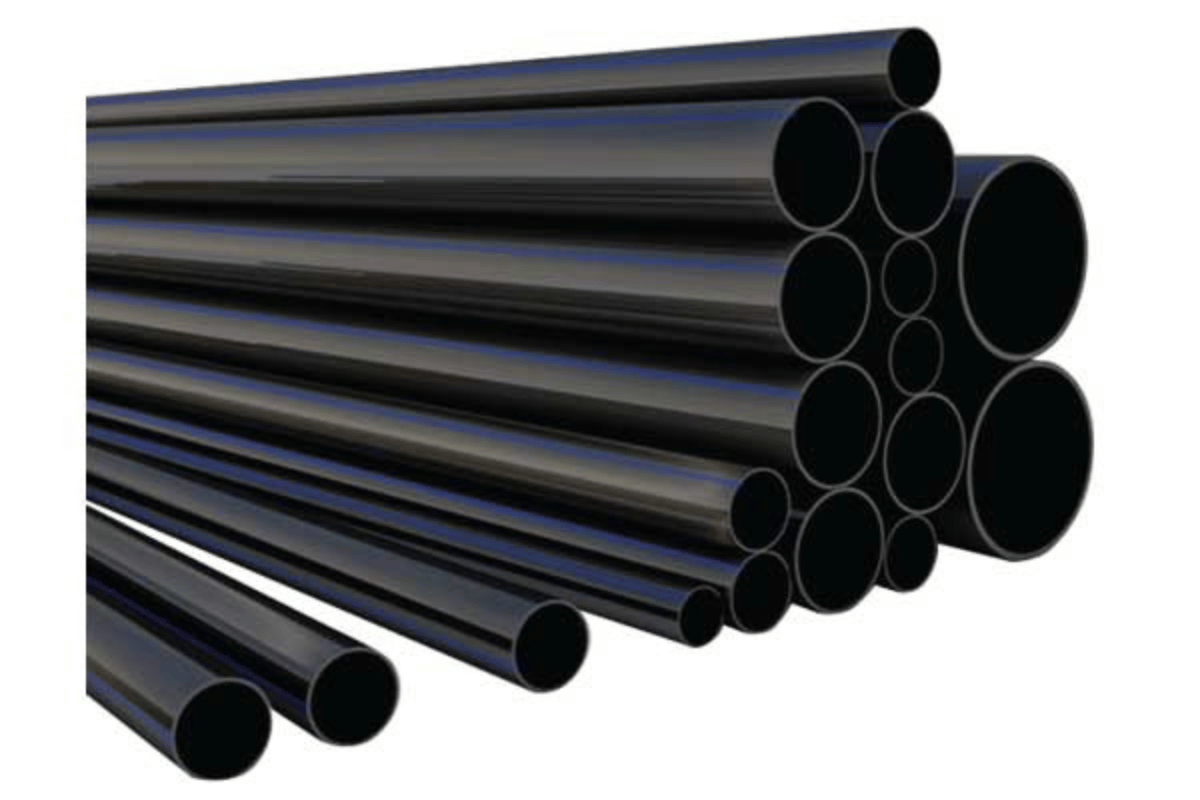
1. What types of industries benefit from using WL Plastics’ polyethylene pipes?
WL Plastics’ polyethylene pipes are utilized in a wide range of industries, including municipal water systems, natural gas distribution, mining, industrial applications, and oil and gas production. Their durability and compliance with industry standards make them ideal for demanding environments.
2. How do WL Plastics’ products contribute to environmental sustainability?
WL Plastics is committed to sustainability by ensuring its products are designed for long-term use, reducing the need for frequent replacements. The manufacturing process minimizes waste and energy usage, and polyethylene pipes are recyclable, further reducing environmental impact.
3. Can WL Plastics customize piping solutions for specific project needs?
Yes, WL Plastics offers customized solutions tailored to each project’s specific needs. Whether it involves unique sizes, pressure ratings, or additional features, their expert team collaborates with clients to develop piping systems that meet precise requirements.
4. How does WL Plastics ensure the reliability of its piping systems under different conditions?
WL Plastics conducts rigorous testing and quality assurance processes to certify that its pipes perform reliably under various conditions. This includes stress tests, pressure tests, and assessments for chemical resistance, ensuring the pipes remain dependable in challenging environments.





